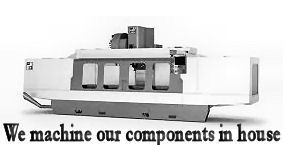I am looking for some real world comparasions of high compression vs low compression. This is gonna be for a 4.0 stroker I am building for my YJ I figured since the 4.0 is a AMC engine I would come here for help.
I have my crank and rods already, and just picked up a good core 4.0 at a junkyard so work can begin.
What I am haveing trouble with is makeing my decision on weather I should build it with high compression or low compression. This is going to go into my daily driver YJ, so that needs to be kept in mind. If I build it with low (stock) compression I will still be able to run regular gas (87 octane) and with gas prices these days that is a definate plus! But I could build it with high compression in hope that mabey gas prices would go down (not likely) and make it hurt less when I fill up.
If I just put it together with stock 4.0 pistons I will get high compression (about 9.5) If I want stock compression I will need to have the dish on the pistons increased to 30cc's I have no idea how mutch it costs to have that done, but I have to keep it in mind.
I have been reading through this site. http://www.jeep4.0performance.4mg.com/stroker.html and they outline a few diffrent ways to build it, and the (I am gonna guess estimated) hp&torque.
The first one is the low compression way.
258 crank and rods
Silvolite UEM-2229 +0.030" bore pistons
Increase piston dish volume to 30cc
8.8:1 CR
Crane #750501 192/204 degree camshaft
Ported HO 1.91"/1.50" cylinder head
Mill block deck 0.035"
Mopar/Victor 0.043" head gasket
0.058" quench height
24lb/hr injectors with stock 39psi FPR for '87-'95 engines
235hp @ 4500rpm, 327lbft @ 2000rpm
I really like those numbers. When driveing down the highway (every day going to work) I am turning just a hair over 2k rpm's at 70 (speed limit here) When doing normal driveing I usally dont go over 3k rpm's So it seems like the low compression build would give me number that match my driveing style pretty good.
The high compression build is as follows
258 crank and rods
Speed Pro H825CP +0.030" bore pistons
CompCams #68-231-4 206/214 degree camshaft
9.6:1 CR
Mopar/Victor 0.043" head gasket
0.082" quench height
24lb/hr injectors with adjustable FPR or MAP adjuster for '87-'95 engines,
265hp @ 4900rpm, 325lbft @ 3500rpm
Its makeing 30 more hp at 400rpms higer but 2ft/lbs less torque and makeing that at 1500rpms higher.
That seems to put it out of my normal driveing rpm range. So I dont know if it is as good of a option as the lower compression one. With the high compression I would have to rev it higher to get the power and have to spend lot more money feeding it premimum (93 octane) fuel to keep it from pinging. Also it states that I will need a adjustable fuel pressure regulator or map adjuster if I go with the high compression. Neither one of those are cheap.
So right now the low compression seems to be winning.
I plan on haveing a 3 angle valve job, mild port and polish, balanced crank and weight matched rods/pistons. I already have a free flowing 2.5in exhaust and a free flowing K&N intake. Throttle bode will be either a 62mm bored stock one, or a moded 65mm ford 5.0 throttle body.
any info or opinions would be great! Thanks.





 Reply With Quote
Reply With Quote



